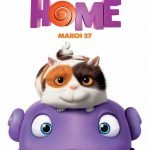Amber, The Story of a Red Fox, is a fascinating early chapter book that follows a red fox, from her birth to adulthood.
We are introduced to the parents, the playful young kits and their lives in the country as they dodge eagles, dogs, and learn lessons about porcupines and skunks.
By fall, Amber’s parents have left, and her brothers have gradually gone their separate ways. Amber still has much to learn. Driven by hunger and fear, she will use every instinct and intelligence she possesses to feed herself and stay safe.
She survives encounters with armed farmers, wolves, foothold traps, and one of the more lethal menaces, winter. But we rejoice when she finally pairs up with another fox that becomes her hunting partner and mate.
Pros:
- Shirley Woods educates us about foxes, without distracting the reader from her story. The facts happen naturally around the actions of the foxes, so we are happily immersed into their world.
- The story does not candy-coat nature. Animals die so others can eat and live. It is neither cruel nor sad, it just happens and life moves on.
- The main character, Amber, is a spunky little fox that learns quickly, and is a sure heroine for young readers.
- I thoroughly enjoyed the illustrations and felt that the style was very appropriate for the story.
Cons:
- The book is written in the third person omniscient POV, and I would rather have heard the story from Amber’s point of view only. I wasn’t a fan of the ‘head-hopping’ and would have felt closer to Amber if the story was from her perspective.
- With all the dangers that she encounters, Amber succeeds in never getting injured. Not even a little. I find that a bit hard to believe, and it belittles the threats she constantly faces. At the risk of sounding mean, I feel that if she suffered a bit more, the reader would sympathize with her more, and fear for her future.
My Personal Opinion:
I was drawn to this early chapter book as an illustrator, a writer for middle grade, and a lover of animals. It was a pretty easy sell, however, I was pleasantly surprised at the quality of the writing and the obvious research involved, and illustrations. Kids will love this story, as it seems there is danger around every corner, as there is in nature.
Questions For Discussion:
- What is the difference between a fox and a dog? (Hint-look at chapter 2)
- What were some of the lessons the kits (baby foxes) learned before they left their parents?
- What did Amber learn about surviving after she left her parents?
- How is the survival of foxes increased by having a partner?















